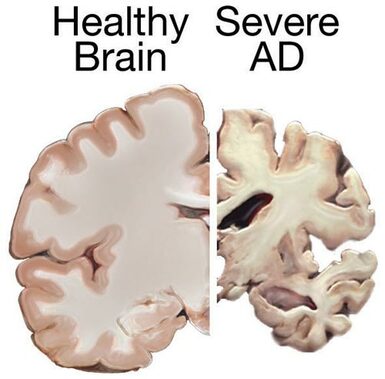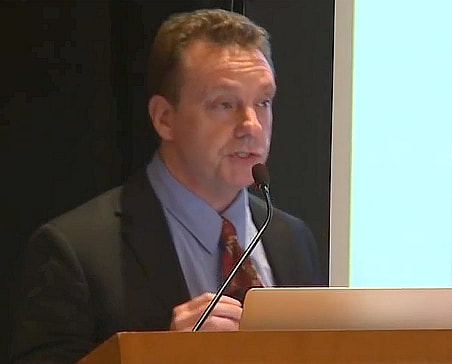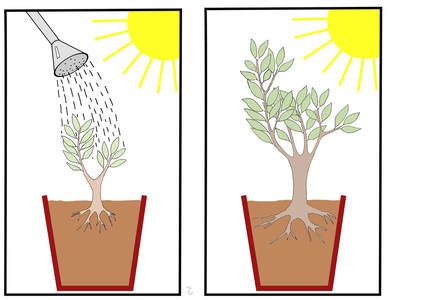|
The founding of the United States as a nation was based on a number of principles. And one of these principles is the avoidance of the tyranny of the majority. This is the fear that a majority of people would impose their will on minorities and put them at a disadvantage. To avoid this, several checks and balances were created as a compromise. For example, the representatives to the House in congress reflect the number of people in a given state, but in the Senate each state has two representatives regardless of its population. This prevents the most populous states from banding together and imposing their will on the least populous states. Another check and balance is the electoral college, which was conceived as a compromise between two extremes, one being that the president is directly elected by the voters, while the other is that the president is elected by the legislatures. Some critics claim that this system has in fact worked so well that, enhanced by other phenomena such as gerrymandering and partisan primaries, it has resulted in a tyranny of the minority. However, many of the issues considered in the national debate depend on the political, social, and religious beliefs of people, and often are a matter of opinion. Consequently, many would argue that these issues should not be resolved in one way or another unless there is a clear political consensus involving a majority of people in both the more and less populated states manifested through their elected representatives. But what about issues that are not a matter of opinion?  What if a majority of people, or even a minority of people empowered by the checks and balances of the political system, embrace a notion that runs contrary to facts and evidence and seeks to impose this notion on others? This would not only be a tyranny of the majority or the minority, it would be a tyranny of fantasy. If individuals are going to be subjected to political, social, and legal norms, don’t they have the right to demand that these norms be based on facts and evidence when applicable? Many would contend that what constitutes facts and evidence is itself a matter of opinion, but this is not true. That is why they are called facts and evidence. They exist regardless of what we want them to be. The interpretation of facts and evidence in a given context can, of course, be subjective, but how well any proposed changes in the laws or norms tally up to facts and evidence should be a prerequisite for their acceptance, no matter how many people vote for them or how many elected representatives support them. Some would argue that that’s what the courts are for. If you don’t agree with any law or local norm, you sue and have the courts deal with it. However, the courts do not necessarily deal with what is aligned with facts and evidence. The courts often deal with what is legal. Thus when creationists tried to impose their views regarding the teaching of evolution, they were denied their wish, not because what they wanted to do was at odds with facts and evidence, but because it was unconstitutional. It violated the principle of separation of church and state. Our methods of governance seem to be designed not mostly around facts and evidence, but rather around the law and the will of the people tempered by the checks and balances of the system. A given law or norm may be approved not because it is moored in reality, but because it is legal, a majority of the people want it, and their elected representatives push for it. Thus what are we to do when, for example, millions of people swayed by QAnon beliefs or 2020 election denial beliefs pressure their elected representatives to pass laws that affect others? The QAnon belief system or the notion that the 2020 election was fraudulent are not supported by facts and evidence. This is not an opinion. It can be demonstrated to be true. Is it therefore fair for people swayed by these unfounded beliefs to impose laws or norms upon others based on these beliefs? I want to suggest that our political, social, and legal system is missing the most quintessential check and balance of them all. We should not only be asking whether the majority of people want it or voted for it. We should not only be asking whether it is legal or constitutional. We should be asking whether it is supported by facts and evidence. Now, I do not mean to imply that everything in our society should be viewed through these lens. There are clearly a lot of aspects of the way our society works that depend on local practices and values, which in turn impact the political and legal realms in our communities. But when important changes to our laws are considered which are based on specific notions or assertions about the nature of reality, then whether these notions or assertions are supported by facts and evidence should be a litmus test for their approval. And this test should trump the will of the majority or of that of their elected representatives. I claim that I, as a citizen of this country, should be free from the tyranny of fantasy. I claim that this is one of my fundamental rights, and no majority of people, or minority of people empowered by the system of checks and balances, has any right to impose on me laws that make or are derived from specific claims about the nature of reality which are not supported by facts and evidence. In this so-called “post truth” era, where large numbers of people with political and economic power refuse to yield to reason and accept reality, I consider that this new right is vital to preserve individual freedom. What do you think? The image, which is not related to the topic of this post and is a free download from pixy.org, has been modified and is in the public domain.
0 Comments
 In this blog I have pointed out that there is a progression in emerging fields of scientific inquiry where competing theories are evaluated, those that do not fit the evidence fall out of favor, and scientists coalesce around a unifying theory that better explains the phenomena they are studying. However, even as a new theory that better fits the available data is accepted in the field, there are individuals who contest the newfound wisdom. Instead of accepting the prevailing thinking, these individuals buck the trend, think outside the box, and propose new ways of interpreting the data. I have referred generically to individuals belonging to this group of scientists that “swim against the current” as “The Unreasonable Men”, after George Bernard Shaw’s famous quote, and I have stated that science must be defended from them. The reason is that science is a very conservative enterprise that gives preeminence to what is established. Science can’t move forward efficiently if time and resources are constantly diluted pursuing a multiplicity of seemingly farfetched ideas. However, this is not to say that the unreasonable man should not be heard. There are exceptional individuals out there who have revolutionary ideas that can greatly benefit science, but there is a time for them to be heard. One such time is when the current theory fails to live up to expectations. I am writing this post because such a time may have come to the field of science that studies Alzheimer’s disease (AD). Alzheimer’s disease is a devastating dementia that currently afflicts 6 million Americans. The disease mostly afflicts older people, but as life expectancy keeps increasing, the number of people afflicted with AD is projected to rise to 14 million by 2050. The disease is characterized by the accumulation of certain structures in the brain. Chief among these structures are the amyloid plaques, which are made up of a protein called “beta-amyloid”. The current theory of AD pathology holds that it is primarily the accumulation of these plaques, or more specifically their precursors, which is responsible for the pathology. Therefore, it follows that a decrease in the number of plaques should be able to alleviate or slow down the disease. This has been the paradigm that pharmaceutical companies have pursued for the past few decades in their quest to treat AD. Unfortunately, this approach hasn’t worked. For the past 15 years or so, every single therapy aimed at reducing the amount of beta-amyloid in the brain has led to largely negative results. In fact, some patients whose brains had been cleared of the amyloid deposits nevertheless went on to die from the disease. Several arguments have been put forward to explain these failures. One of them is the heterogeneity in the patient population. Individuals that have AD often have other ailments that may mask positive effects of a drug. According to this argument, performing a trial with patients that have been carefully selected stands a greater chance of yielding positive results. Another argument is the notion that many past drug failures have occurred because the patient population on which they were tested was made up of individuals with advanced disease. According to this argument, drugs will work better with early-stage AD patients that have not yet accumulated a lot of damage to their brains. Even though many researchers still have hopes that modifications to clinical trials like those suggested above will have the desired effect as predicted by the amyloid theory, an increasing number of investigators are considering the possibility that this theory is more incomplete that they had anticipated and are willing to listen to new ideas and open their minds to the unreasonable man.  One example of these men is Robert Moir. For several years he has been promoting a very interesting but unorthodox theory of AD and getting a lot of flak for it. He dubs his hypothesis “The antimicrobial protection hypothesis of Alzheimer’s disease”. According to Dr. Moir, the infection of the brain by a pathogen or other pathological events triggers a dysregulated, prolonged, and sustained inflammatory response that is the main damage-causing mechanism in AD. In this hypothesis, the production and accumulation of the amyloid protein by the brain is actually a defense mechanism! Dr. Moir agrees that sustained activation of the defense response will lead to excessive accumulation of the amyloid protein and that this eventually will also have detrimental effects. However, even though reduction in amyloid protein levels may be beneficial, accumulation of the amyloid protein is but one of several pathological mechanisms. Moir stresses that the main pathological mechanism that has to be addressed by AD therapies is a sustained immune response, which over time causes brain inflammation and damage. He considers that accumulation of the amyloid protein is a downstream event, and it is known that the brain of people with AD exhibits signs of damage years before any amyloid accumulation can be detected. But much in the same way that Dr. Moir has been promoting his unconventional theory, there are many other theories proposed by others. Oxidative stress, bioenergetic defects, cerebrovascular dysfunction, insulin resistance, non-pathogen mediated inflammation, toxic substances, and even poor nutrition have been proposed as causative factors of AD. This is the big challenge that scientists face when opening their minds to the arguments of the unreasonable man: there is normally not one but many of them! So who is right? Which is the correct theory? And why should just one theory be right? Maybe there is a combination of factors that in different dosages produce not one disease but a mosaic of different flavors of the disease. And maybe the amyloid theory is not totally wrong, but just merely incomplete, and it needs to be expanded and refocused. Or maybe the beta-amyloid theory is indeed right and all that is required for success is to tweak the trial design and the patient population. Maybe, maybe, maybe… When a scientific field is beginning, or when it looks like a major theory in a given field is in need of reevaluation, there always is confusion and uncertainty. Scientists in the end will pick the explanation(s) that better fits the data and take it from there. They did that when most scientists accepted the amyloid theory and they will do it again if this theory is found wanting. The new theory that replaces the amyloid theory will not only have to explain what said theory explained, but it will also have to explain why the old theory failed and what new approach must be followed to successfully treat the disease. In the meantime, Dr. Moir’s theory, along with a few others, is the center of focus of new research evaluating alternative theories to explain what causes AD. The amyloid theory or aspects of it may still be salvageable, but in the field of AD it certainly looks like the time for the unreasonable man has come. Note: after I posted this, I became aware of an article published in the journal Science Advances that proposes a link between Alzheimer's Disease and gingivitis (an inflammation of the gums). The unreasonable men are restless out there! The image is a screen capture from a presentation by Robert Moir on the Cure Alzheimer’s Fund YouTube channel, and is used here under the legal doctrine of Fair Use.The brain image from the NIH MedlinePlus publication is in the public domain. A long time ago in a college biology lab far, far away…a fellow student and I performed an experiment to assess how different foodstuffs were handled by the intestine. We were not studying anything new, we were just repeating a classic experiment to examine the effect of the composition of food on the speed of digestion. So we took a few groups of rats and fed them a high-carbohydrate diet or a high-fat diet. We determined how much food the rats had consumed, and we euthanized the rats at different times after ingesting the meal and measured the weight of the contents of the stomach and intestine. We found that the food mostly made up of carbohydrate emptied quickly from the stomach, and there was a small amount of it present in the intestine. However, the food made up of mostly fat emptied slowly from the stomach, but there was more of it in the intestine; so far so good. One of our conclusions was obvious from the results, the fatty food emptied more slowly from the stomach. But in our report on the experiment we went beyond that, and also concluded that the food made up of carbohydrate was absorbed faster into the body compared to the food made up of fat. Later we were furious to find out that our experiment report received the equivalent of a “C”! When we confronted (literally) our professor, he explained that we could not make that conclusion because we had not performed an experiment specifically designed to evaluate the absorption of the food into the body. We were incredulous at this reply. “Where else could it have gone?” we enquired. The professor explained that no matter how obvious, we could not make this claim without presenting evidence. He said that, for example, we could have measured the level of certain fats and carbohydrates in the blood vessels draining the intestines and correlated that with the amount of such nutrients inside the intestine. But absent that evidence, we had made an unwarranted conclusion. Needless to say, we were not too happy with our grade. We had worked really hard to conduct the experiment staying late in the lab preparing the diets and making all the measurements. We grudgingly accepted the professor’s argument, but still we could not shake off the idea that, at heart, the whole notion was just a stupid formalism. After all, ingested food doesn’t just disappear; it has to go somewhere. If it is not in the intestine, where else could it have possibly gone but inside the body? At the time we did not appreciate that the requirement for evidence that the professor was imposing on us, despite repeating a well-known scientific experiment and working with a well-known animal model, was meant to alert us to be cautious when performing experiments for the first time with less known systems. In fact, if we had paid attention during high school, we would have remembered a famous example of one such experiment that reached an erroneous conclusion for not following the cautious approach required by our professor.  In 1662 the chemist Jan Baptist van Helmont conducted what is considered the first quantitative experiment in biology. He took a pot and filled it with 200 pounds of soil, which he had weighed after drying it in a furnace, and planted a willow tree sapling weighing 5 pounds in the pot. For 5 years he watered the tree, and at the end of this time period the tree weighed 169 pounds. Yet when he reweighed the soil after drying it as described above, he only found a 2 ounce difference. This indicated that the entire 164 pounds of the mass of the tree could not have possibly come from the soil. Helmont concluded that the 164 pounds of wood, bark, and roots arose from water. This conclusion at the time (1662) must have made sense. After all, from where else could all that extra mass have possibly originated? The only thing the tree seemingly received was water, thus the difference in weight could only have come from the water, right? Notice that van Helmont did not produce any evidence to support this conclusion. Much in the same way that we concluded (without evidence) that the food was absorbed because it could not have gone anywhere else, van Helmont concluded that the extra tree mass came from the water presumably because it could not come from anywhere else. It would be 100 more years before the work of several scientists including Joseph Priestley, Jan Ingenhousz, Jean Senebier, and Nicolas-Theodore de Saussure would establish that plants take up CO2 from the atmosphere and produce oxygen under the influence of sunlight, and that the gain in weight as a plant grows is not just due to accumulation of water or its conversion into tree material, but to the fixation of CO2 into chemical compounds which make up the solid constituents of the wood, bark, and roots. Ironically, van Helmont was the first to identify a gas produced from burning plants which he called “sylvestre”, and which we now know to be CO2, but he never made the connection that plants may take up this substance from the air. So yes, my dear old professor, you were right. Even the obvious must be supported by evidence! Image of the van Helmont experiment by Lars Ebbersmeyer used here under an Attribution-Share Alike 4.0 International (CC BY-SA 4.0) license. |
Details
Categories
All
Archives
June 2024
|
 RSS Feed
RSS Feed